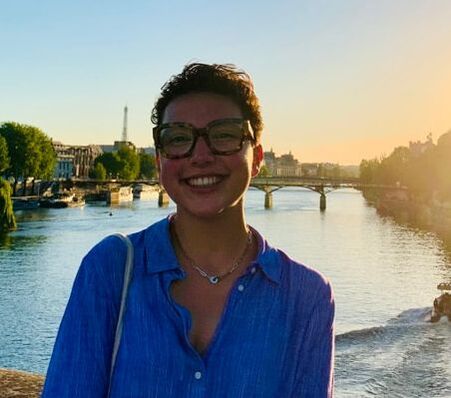|
The marginalisation of LGBTQ+ populations in post-conflict societies isn’t a new phenomenon. Rather, it is a deeply entrenched one, so much so that this invisibility has today become systematic. While every February we celebrate LGBTQ+ history month, it is important to turn our attention to the everyday lives of those whose existence as a minority in the violent and hostile post-conflict environment is a constant struggle for life and rights, as well as a fight for recognition and integration.
What are the main challenges faced by LGBTQ+ communities in post-conflict societies, and what do they mean for the possibilities of reconstruction and reconciliation ? First, it is important to stress that the persecution and devaluation experienced by LGBTQ+ communities are not a consequence of conflict. Rather, they are part of a continuum of violence which transcends the time and space of the conflict itself (Myrttinen and Daigle, 2017, 15). LGBTQ+ communities all over the world are already among the most vulnerable populations, facing hardships on a daily basis.The queer ‘post-conflict’ experience is then a particularly ambiguous one, as homophobic and transphobic violences do not actually stop. Rather, in certain cases, the breakdown of law and order exacerbates the perils faced by LGBTQ+ individuals, further marginalising them. These violences take multiple forms. Most widespread, yet still under-addressed, is the sexual and physical violence inflicted to LGBTQ+ communities. Conflicts in particular foster a culture of violence, which leads to the social acceptance of targeted brutality. By encouraging brutal responses towards gender and sexual minorities seen as ‘alien’ to the broader community, military and political entities direct systematic exclusion (Ashe, 2018, 4). This in turn generates fear and distrust, and most importantly, enables the identification of scapegoats. Rape, beatings, abuse, forced pregnancy, detention and killings are often carried out in post-conflict settings ito ‘correct’, ‘punish’ or ‘silence’ identified LGBTQ+ individuals. Physical violence is then indivisible from normative and psychological violence. Conflicts produce hyper-masculinised identities, which reinforce patriarchal norms and heteronormative ideals. Unsurprisingly then, heterosexuality appears to be the most regulated and enforced norm in cultural and ethnic reconstructions (Nagel, 2000, 113). It is particularly used by nationalist governments and armed groups to cement nationalistic sentiments along ethno-gendered and ethno-sexual lines, in order to create a ‘purer’ community of individuals. The enactment of these norms enables two main goals : persecution and invisibilization. On the one hand, strict heteronormative cultures can motivate violence against LGBTQ+ minorities which do not fall into the accepted norms. On the other hand, by stigmatising LGBTQ+ individuals, it leads to their rejection on both the political and domestic levels. In post-conflict settings, queer individuals very often experience harrassment and abuse by security agents, local community members, and are largely excluded from economic opportunities as well as access to services. In many societies identified as ‘post-conflict’ such as Iran or Mauritania, homosexuality carries an immediate jail sentence, and even death penalty (Hawthorne, 2005). Furthermore, they suffer from a blatant lack of representation in governmental and legal instances, which are keys to completing their marginalisation. Public exclusion also constitutes the basis for domestic and familial denial. Cultural, religious and political conservatisms in post-conflict settings instil fear and exert pressure on families of LGBTQ+ individuals who can reject them or perpetrate ‘honour abuse’ or killings to avoid humiliation and social isolation (Kiss et al., 2020, 3). In many cases, queer people have to flee their own homes and countries to escape the various forms of violence conducted against them. However, persecutions of refugees on the basis of their gender or sexual orientation transcend borders and international legal frameworks, therefore further contributing to their alienation (UN, 2015, 4). A final type of violence, that can be qualified of immanent violence, is worth mentioning. A combination of physical and normative violences, immanent violence represents the assimilation of cultural norms and beliefs which are detrimental to the individual. A study led by Kiss et al., on male and LGBT survivors of sexual violence during conflicts concludes on three main points. First, in the case of post-conflicts settings, many gay male sexual assault survivors have internalised the widespread homophobia and gender stereotypes at the roots of their society. Lack of ‘manhood’, deviance, responsibility for the conflict, are among the myths that obscure the visibility of sexual violence against gay men, and prevent them from seeking adequate help (Kiss et al., 2020, 14). Secondly, and more broadly, the harassment experienced by gender and sexual minorities may lead them to hide their sexual orientation or gender identity as a safety measure, further aggravating mental health symptoms, such as depression or PTSD. (Kiss et al., 2020, 3). Finally, the study stresses the overall absence of studies on the effects of sexual violence on LGBTQ+ survivors, reflecting a general lack of inclusivity in the aftercare and that is given to the victims. The experience of queer individuals in post-conflict societies is therefore a very violent one, where intricate political, social and cultural norms of brutality create a hostile environment further marginalising an already particularly vulnerable community. What then are the implications and consequences of such violences on the wider post-conflict environment ? Firstly and most importantly, this poses a challenge to the definition of ‘post-conflict’, on the basis of security and human rights considerations. The extent of violence and the lack of protection to which LGBTQ+ individuals are still being exposed in post-conflict societies shows the failure of governments in creating a safe environment for these minorities to freely exist and express themselves (UN, 2015, 2). Furthermore, when a society allows or commits violence on some of its members, its social health is affected too (Hawthorne, 2005, 40). In other words, in the post-conflict context of peace-building, reconciliation becomes impossible without justice and recognition, inclusivity and representation. In the case of LGBTQ+ communities, their invisibilization continues and is institutionalised on legal, governmental, and international levels. Often, the enactment of conservative and highly masculinized cultural, religious and political institutions in post-conflict settings reinforces prejudice and hampers participation in decision-making. For example, while Columbia’s 2016 Peace Agreement included provisions by and for LGBTQ+ individuals, it got rejected by popular referendum because of the pressure exerted by national religious communities. Ultimately, a new agreement passed, one in which LGBTQ+ commitments were however greatly reduced. More globally, a study from the Political Settlement Research Project of the University of Edinburgh shows that, out of the 1500 peace agreements signed between 1990 and 2015, only 9 referred to sexual orientation (https://www.peaceagreements.org/). While 6 of them granted more rights to gender and sexual minorities, the other 3 openly banned or prohibited same sex marriage or homosexuality (Bell, 2019). While on a legal point of view ‘peace’ was effectively enshrined in the 1500+ post-conflict societies mentioned, the absence of sexual minorities altogether in most of the agreements reflects the broader lack of visibility of LGBTQ+ individuals, which enables the relative covering up of the violences committed aagainst them. From this brief overview, it is crucial to seize the alarming situation of LGBTQ+ individuals in post-conflict societies. These communities, which already are among the most vulnerable in peace times, experience the exacerbation of violence during conflicts, and suffer from its normalisation in post-conflict periods. They face the constant pressure and censure of ethno-nationalist, heteronormative and conservative policies which extend and ramify to every layer of society. These also, and most importantly, lead to both the active violence and progressive exclusion and marginalisation of queer nationals. While representing a large-scale threat to the livelihood and existence of LGBTQ+ communities, this also shows the worrying limitations of peacebuilding attempts, which overlook and violate one of the most basic human rights ; safety.
0 Comments
|
Author
Lucile is an International Relations student at the War Studies Department, King's College, London. She researched and wrote this article as part of the BizGees & War Studies Department Internship programme.
|

 RSS Feed
RSS Feed

